Parts of Antelope Island are simply covered with tiny purple flowers right now and I often look for opportunities to photograph birds in such a setting.
1/2500, f/5.6, ISO 500, 500 f/4, 1.4 tc, natural light
Two days ago I found a small flock of Yellow-headed Blackbirds foraging in a particularly dense patch of them and couldn’t resist firing off a few shots. The birds weren’t very close but I hoped that with the flowers in the setting it wouldn’t be necessary to get the birds particularly large in the frame.
1/2000, f/6.3, ISO 500, 500 f/4, 1.4 tc, natural light
The blackbirds were apparently feeding mostly on these small, green insect larvae. There must have been a bunch of them because the birds were very actively feeding.
After a few minutes we begin to hear soft calls of a Killdeer. Killdeer don’t call softly very often, they’re usually much louder (an early common name for them was “Noisy Plover”) so for a short time the call barely registered with us as we photographed the blackbirds.
1/4000, f/5.6, ISO 500, 500 f/4, natural light
After a few minutes we became more aware of the call and the fact that its source was very close to us but at first we couldn’t locate the bird. Then we spotted it on the ground and among the flowers and it was much closer to us than the blackbirds were. I was surprised at how difficult it had been to spot with it so near and us having the ability to hone in on the sound.
1/4000, f/5.6, ISO 500, 500 f/4, natural light
At first the bird seemed relatively unconcerned by our presence and even stopped to preen several times.
1/5000, f/5.6, ISO 500, 500 f/4, natural light
But eventually it began to show some signs of agitation at our presence…
1/5000, f/5.6, ISO 500, 500 f/4, natural light
and began to call nervously as it sometimes approached us even closer rather than moving further away. All this made us wonder if it had a nest nearby…
1/3200, f/7.1, ISO 500, 100-400 @ 400mm, natural light
Which turned out to be the case. Killdeer often build their nest (scrape) next to an object like this rock. Twice the bird squatted on the same spot like this and then left again. When we became aware of the nest we left the area to give the bird some peace and security.
I have no idea if there were eggs in the nest and didn’t approach it to find out. Killdeer often make several scrapes before choosing which one to use for nesting but both sexes are usually present during that process and this bird was alone at the time. I also don’t know if this was the female or the male as the sexes are alike and they both incubate the eggs.
I guess there’s nothing momentous about this post but after such a hard, cold and long winter and early spring I was delighted to photograph two species among the pretty little flowers and I was heartened by the nesting activities of the Killdeer as evidence that spring has finally sprung.
Ron


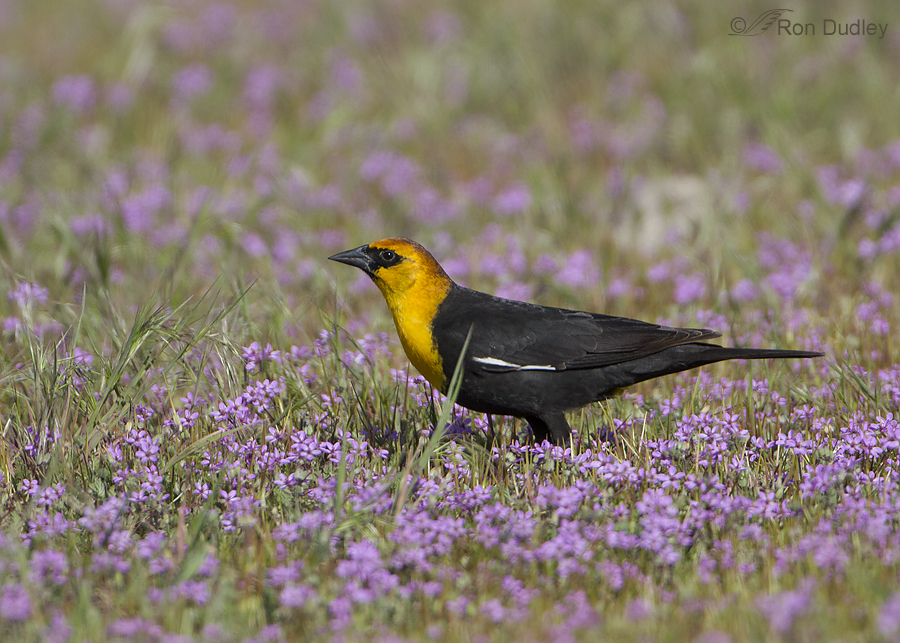
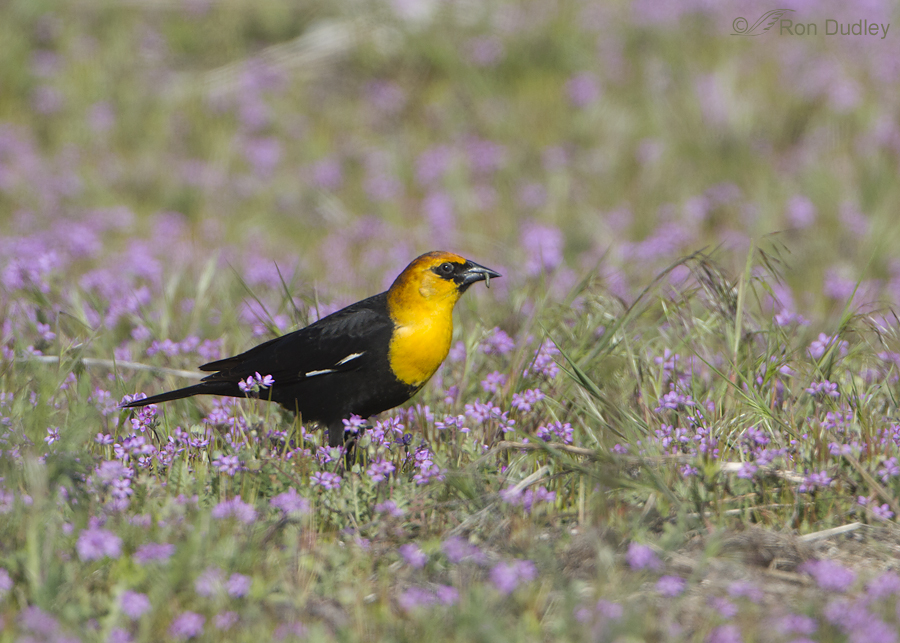
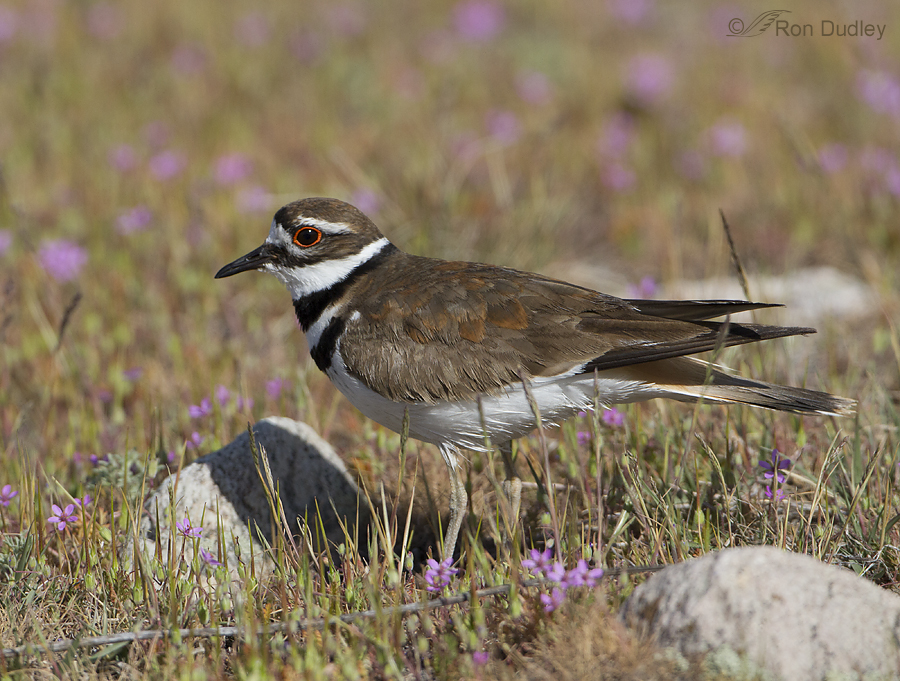
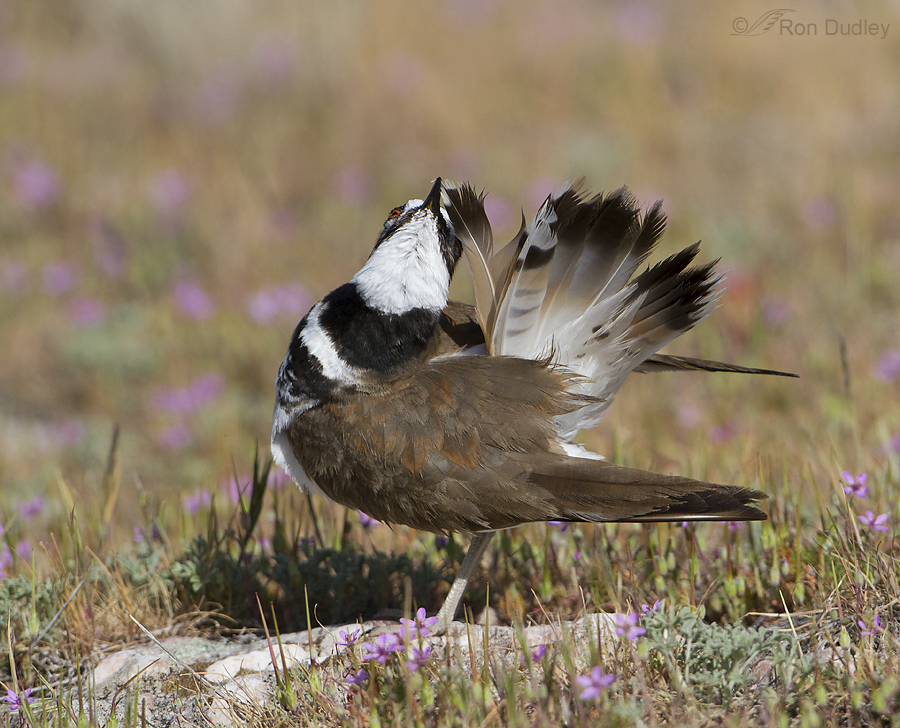
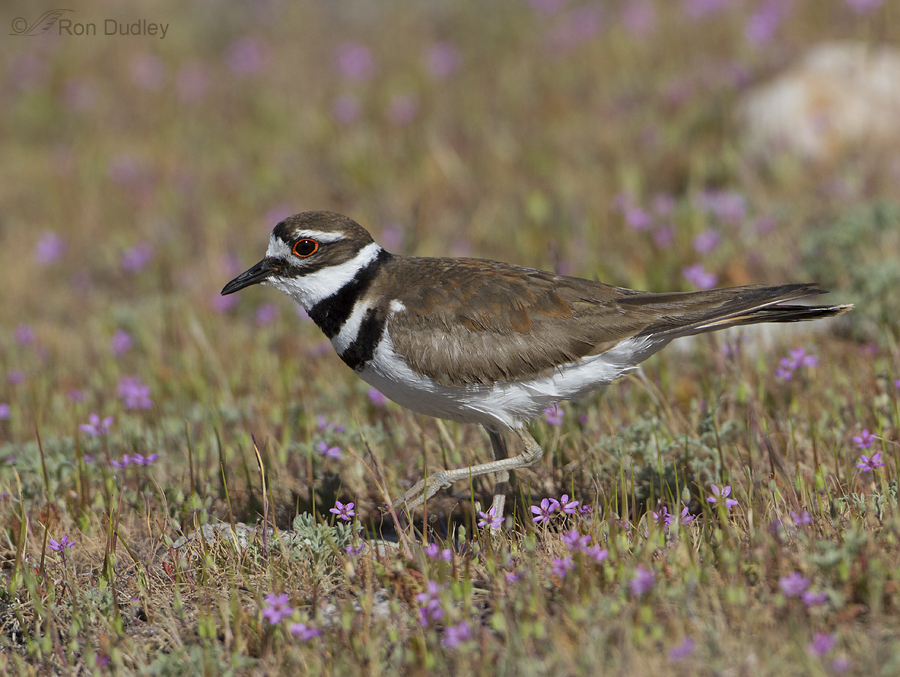
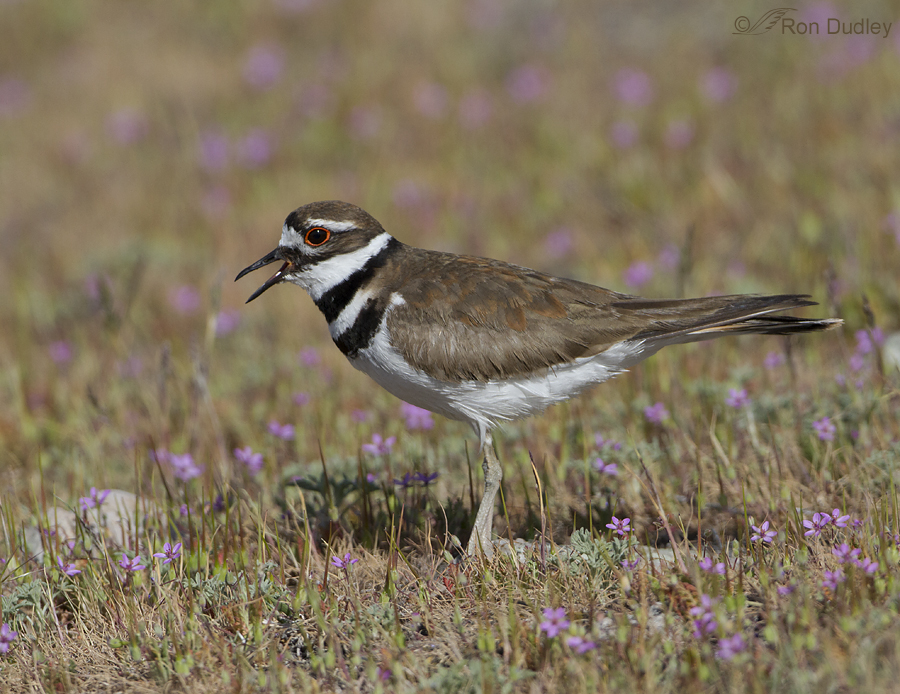
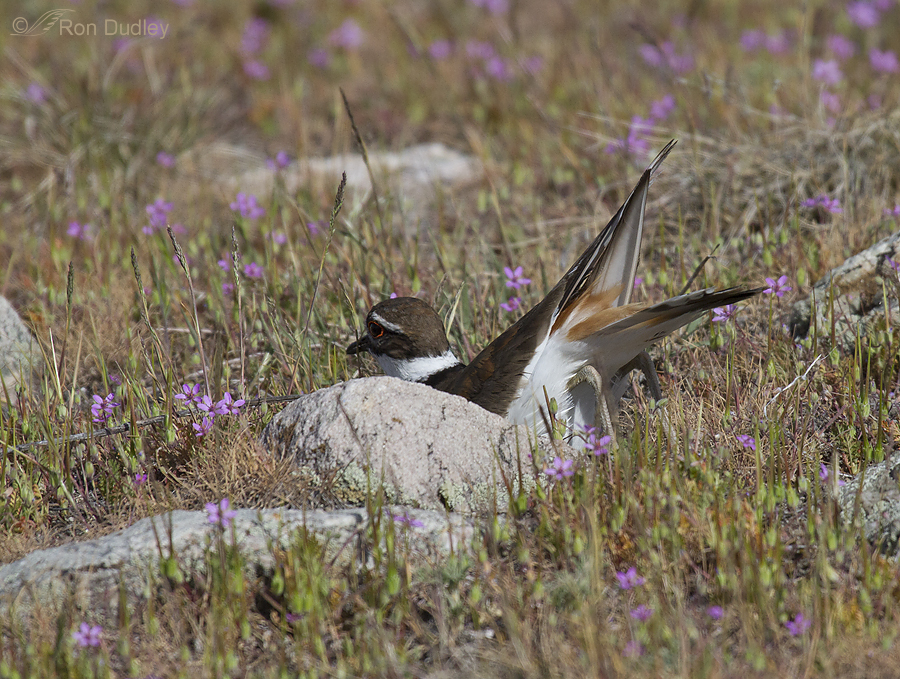
Such a quintessential spring color palette!
Beautiful shots! Isn’t spring time lovely!?
I may be mistaken, but I think those little purple blossoms are a small wild geranium often called ‘Heronsbill’ or ‘Cranebill’. When you are out there a little later in the season look at them a bit closely and I think you will see how they got their name. I’ve also heard the plant called “Filaree” because of the finely dissected basal leaves.
Janet, My friend Mia told me that they were a type of wild geranium but that’s all I knew about them. Thank you very much.
Great images Ron, very nicely done!! Do either the Yellow-headed or Killdeer nest within easy reach of your truck?
Beautiful shots!
Thank you, Dick, It can be pretty easy to find Killdeer nests since they often build them in the gravel on the edge of roads or parking lots. The trick is in not inadvertently damaging the nest because you don’t even see it.
Yellow-headed Blackbird nests are another story. Even if I can get close in my vehicle they’re so buried in the cattails that I usually can’t see them.
However, I generally avoid nest photography because it’s so easy to disrupt the activities of the birds at such a critical time. I’ve made occasional exceptions to that rule when a.) I’m positive that my long lens gives me enough reach that I’m not so close as to disturb them, and b.) there are no other people in the area so that my activity points out the location of the nest. As you’re well aware, some folks approach nests much too closely, remove protective vegetation around the nest to get better photos and a variety of other unethical behaviors. The problem is that one doesn’t know who is ethical and who isn’t so I make it a point to not disclose nests.
Gorgeous images!
I appreciate the comment, Cindy.
Both are beautiful in the flowers!
Thanks, Leisa.
I feel the same way about Killdeer as you mentioned that you feel about Mountain Plovers. I’ve been charmed by one, fell in love and they have been a favorite bird ever since. How wonderful to see one in such a beautiful setting with the little purple flowers! The Yellow-Headed Blackbird is gorgeous as well. Thanks so much!
Sharon, I’m not familiar with many plover species but the ones I’ve photographed (the two you mention) are pretty special.
Two more birds I’ve never seen before Ron! (I’m in England) Very enjoyable to watch I’m sure. As an artist, I like those colours. The yellow on the blackbird and the orange ring around the plover’s eyes give them a real sparkle.
Thanks, Paul. Occasionally we find one of these male blackbirds with and orange head and neck, rather than yellow. Quite distinctive.
I think the photos are “momentous” Ron! Absolute beauty!
I’m glad you like them, Nancy.
Wow Ron,
Great photos in a wonderful setting. Really nice!
Ed
Thanks, Ed.